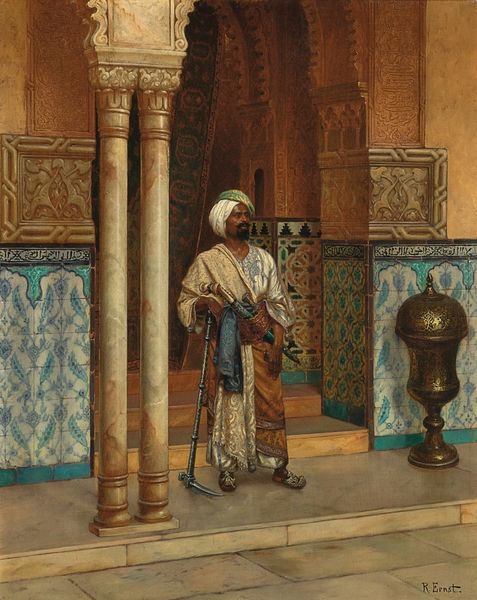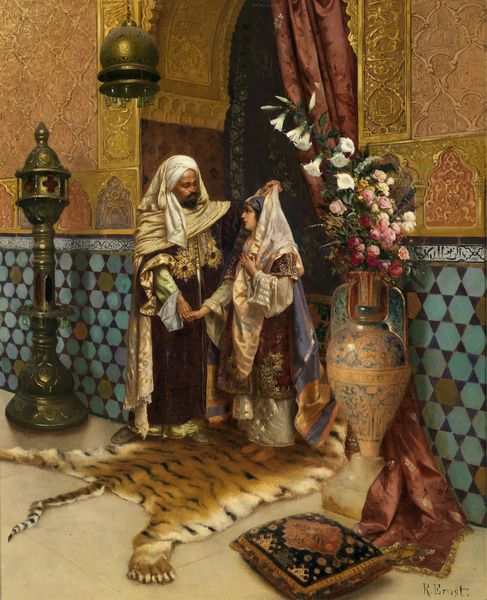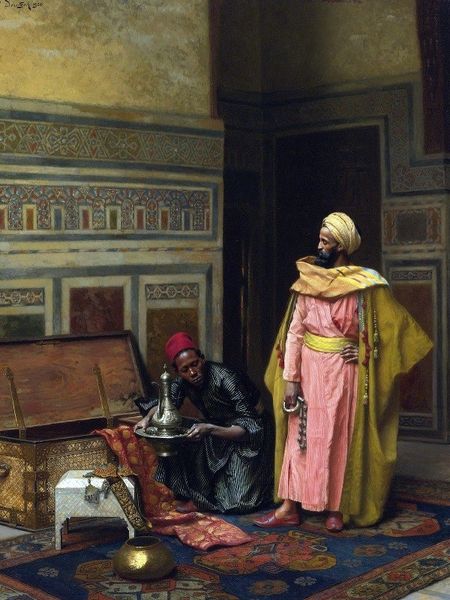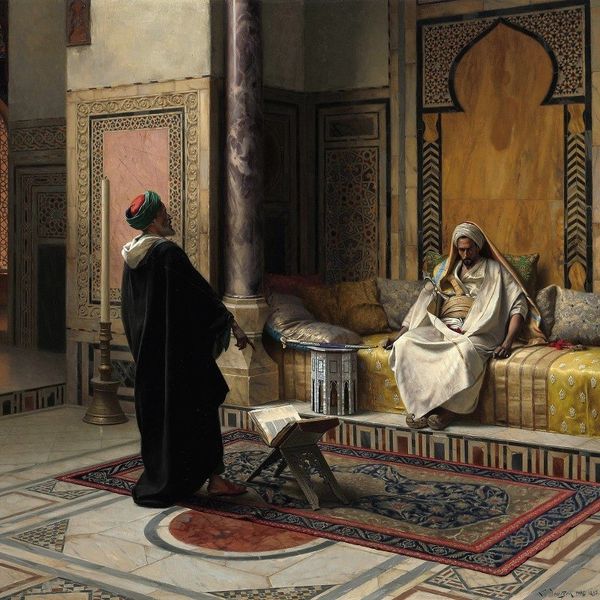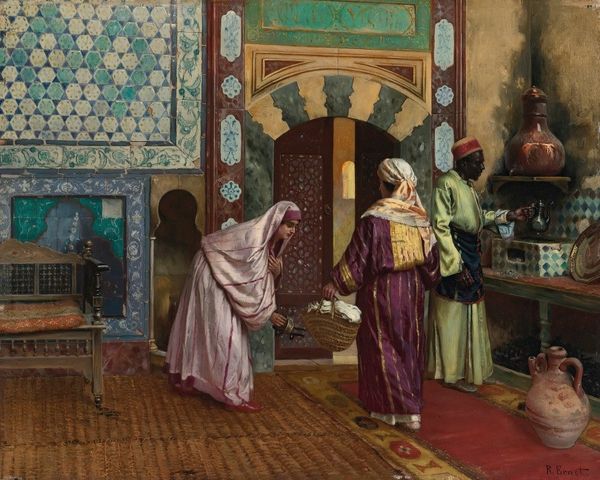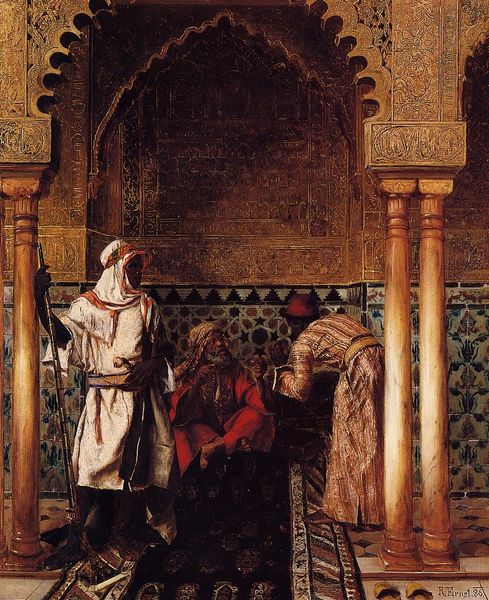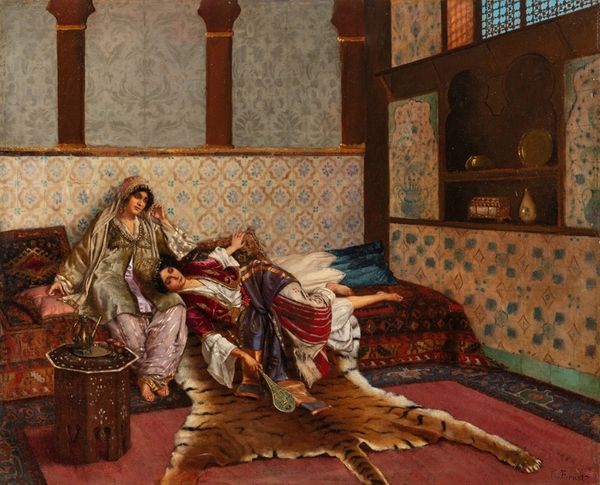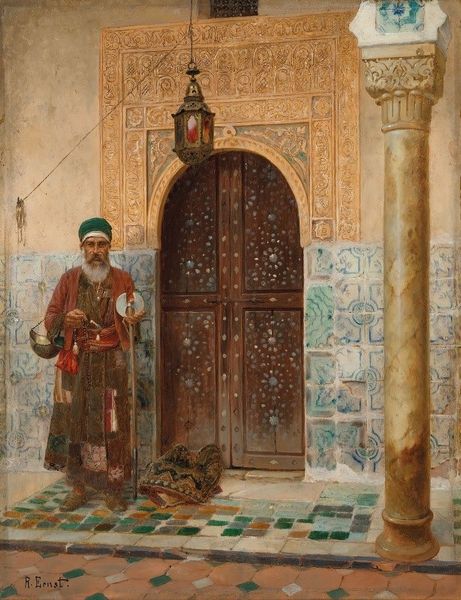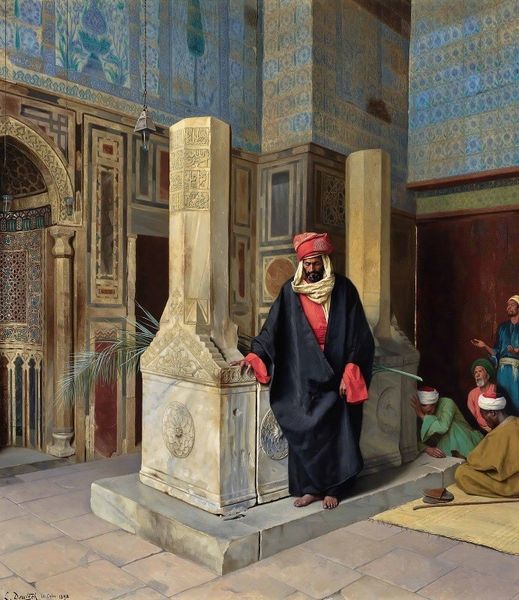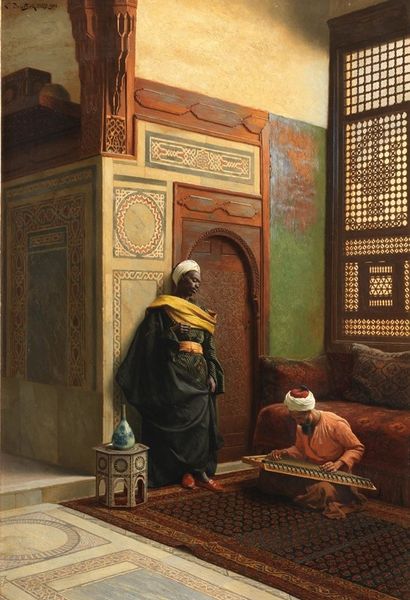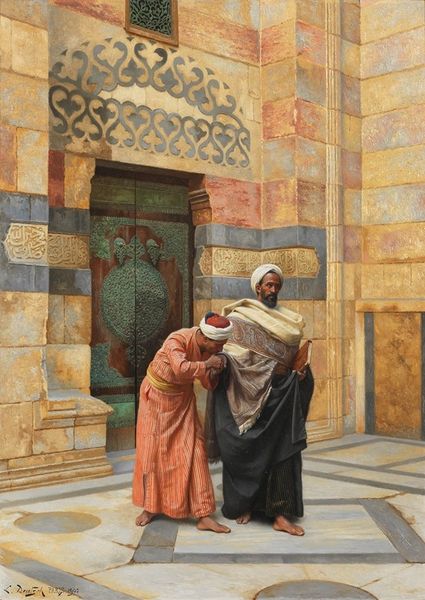
painting, oil-paint
#
gouache
#
narrative-art
#
painting
#
oil-paint
#
painted
#
oil painting
#
orientalism
#
genre-painting
#
history-painting
#
academic-art
Copyright: Public Domain: Artvee
Curator: Looking at Jean-Léon Gérôme's "Before The Audience," an oil painting, I am struck by how tangible the artist renders the scene, especially with those intricate tiles. There's almost a haptic quality. What captures your attention? Editor: The detail is pretty incredible, but the tilework steals the show. How does Gérôme’s choice of oil paint contribute to the feeling of authenticity in this piece? Curator: Oil allows for layers and glazing, simulating the reflective nature of glazed tiles. But beyond imitation, consider what the act of painting meant at this time. Gérôme meticulously reproduces tilework, but where do these tiles originate? What socio-economic conditions enabled the availability and value of those materials, and consequently the making of this artwork? Editor: I hadn’t thought about that. It is fascinating how the availability of materials dictated the look of the painting itself, but that kind of tiles have become a way to represent the orient. Do you think there is an element of... consumption here? Curator: Precisely! It speaks volumes about Western European consumption of orientalist themes. The audience isn’t just the figures in the painting; it’s the Western art consumer. What impact does that have? Editor: It almost makes me see the piece as less a window into a real place, and more of a mirror reflecting the desires of its patrons. It definitely reframes the way I perceive the piece now! Curator: Exactly. By focusing on the materials and the social context of production and consumption, we uncover layers of meaning often overlooked in traditional art historical analysis.
Comments
No comments
Be the first to comment and join the conversation on the ultimate creative platform.

